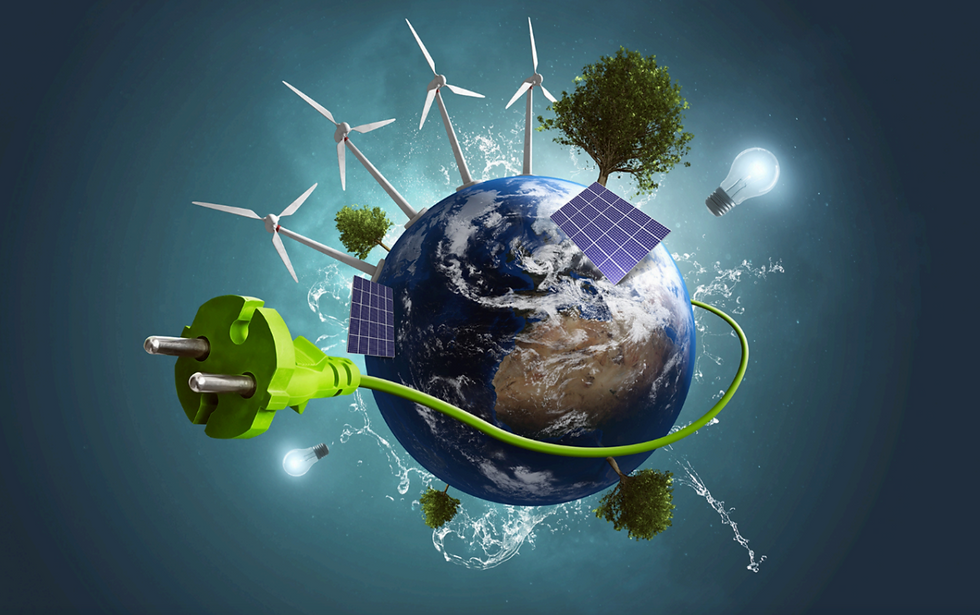Tomorrow Never Dies: A Closer Look at Qatar's $5 billion Water Reservoirs Project
- Dr. Hamid Pouran
- Apr 18, 2018
- 3 min read
Ambitions, rivalry, and conflicts have been part of the Middle East narratives for many decades. Qatar's story, however, is entirely different. It is a small peninsula whose sole land border is with Saudi Arabia. 85 times smaller than the United States, it is one of the wealthiest countries in the world. Qatar has been punching way above its weight in the recent years, aiming to play a prominent role in 21st-century global politics. Its media ( Al Jazeera), and airline (Qatar Airways) are well-known around the world, and it will host World Cup 2022, the first World Cup ever to be held in the Middle East.
Everything seemed to be going fine for this country until the recent diplomatic crisis, when several, mainly Arab, countries including Saudi Arabia, abruptly cut off diplomatic relations with Qatar in June 2017. The result has been the continued blocking of Qatar's only land border and restricting its air and sea routes, forcing Qatar Airways to reroute flights to Africa and Europe through Iranian airspace. Since then, Turkey and Iran have been providing food and water supplies for Qatar.

A summary of Qatar's diplomatic crisis. Credit: Al Jezeera.
For Qataris, as well as hundreds of millions of other Middle Easterners, water is much more than the transparent chemical that your body needs to function correctly. Over the centuries people in this region have developed deep emotional bonds with water, its presence means; safety, security, development and even a sign that God likes you. In fact, for a Muslim, water and the religion are intertwined; "Believers, when you rise to pray wash your faces and your hands..." is a good example (Qur'an, Sura 5, ayat 6).
It rarely rains in the Middle East. In Qatar, the average annual precipitation is less than 3 inches. To put this in perspective, in Paris it is 25 inches. The climate of these countries worsens the problem. The average high temperatures intensify water evaporation, which puts more pressure on the already scarce available water resources. Unfortunately, climate change threatens to make this water scarcity even worse. Rising temperatures, frequent heat waves, and less annual precipitations are among the expected impacts of global warming in the region. It is understandable that a small peninsula located in the harsh climate of the Middle East is intrinsically vulnerable, but if you are one of the wealthiest countries in the world, your citizens expect an ever-increasing quality of life. Trying to portray yourself as a regional power, you need to be well-prepared for diplomatic crises, or even worse.

Qatar's network of reservoirs. Credit: Kahramaa
Qatar's water mega-reservoirs are a step towards being prepared for such scenarios. The ambitious project is designed to supply seven days of strategic storage of fresh water in the first phase, started in 2015 and to be completed in 2018. Connecting these mega reservoirs, which are being built in five different locations along the Qatar National Utility Corridor, needs roughly 600 km of metal pipes. These pipelines would equal the weight of 70 Eiffel Towers!
24 huge concrete reservoirs are about to be completed as part of the first phase of the project, which would deliver 2,300 million gallons (10.45 million cubic meters) of water storage capacity. Each of these 24 reservoirs occupies approximately 300*150 meters (9 football pitches can be fitted in this area). The second phase of the project, which will add 16 new repositories, will be started after 2020. The planned storage capacity is 3,800 million gallons (17.28 million cubic meters) of water, which would provide seven days of water storage for expected demand in 2036.
The total estimated cost of the mega-project is $4.7 billion USD. The project is crucial in providing emergency water, yet Qatar still needs to rely on desalinated seawater to satisfy 99% of its municipal water demand. The desalination methods used are energy intensive, and Qatar needs to allocate proper, renewable, energy resources for this purpose. Furthermore, desalination of seawater has adverse environmental impacts (e.g. because of wastewater discharge that is emitted into the sea), which need to be considered before expanding such projects. This almost 5 billion dollars mega reservoirs project will not solve the Qatar water shortage problems, but certainly is enough to mitigate the problem in times of emergency. However, Qatar needs to be aware that in the long run, only sustainably developed projects could add to its security and prosperity.
Guest blogger Dr. Hamid Pouran is a SCISA Database expert, environmental scientist, a research associate at SOAS and a lecturer in environmental technology at the University of Wolverhampton.
UNHS always welcomes guest blogs. If you would like to write for us, please send us an email at hello@unhscotland.org.uk.











Comments